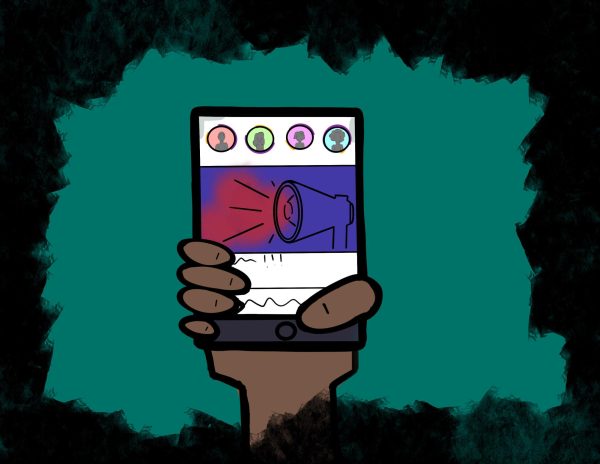Earlier Education of Racism Needed
Through Children’s Eyes
In response to the Black Lives Matter movement and videos of Campolindo students using racial slurs, the administration has rolled out new diversity training known as Cohort Academy. While this may seem like progress in becoming an anti-racist community, we need to implement this sort of equity training in elementary and middle schools.
“I just find it sort of crazy that we have at minimum an hour on racial equity, whereas my sisters who are at [Joaquin Moraga] and [Rheem Elementary] have only touched on the subject,” said sophomore Hailey Benson.
This phenomenon is immensely problematic. According to Parenting Counts, children begin to imitate their parents’ behavior from a very early age and are extremely impressionable.
Children learn to say ‘please’ and ‘thank you’ and observe other moral behavior from their parents, then take this conduct onto the playground at school, thus teaching and learning mannerisms from other kids.
“Social interpretation of these differences is cued from the parents’ feelings and reactions,” wrote MDedge Pediatrics. Therefore, if parents act on their own learned beliefs that a certain race is bad, their children will pick up on this early on.
“Working to reduce racism thus requires parents (and professionals) to examine their prejudices to be able to convey positive or neutral reactions to people who are different,” MDedge Pediatrics added.
Many times I’ve seen my peers attempt to attribute a problematic joke or comment to their upbringing. It is inexcusable to be racist, no matter what the environment you were brought up in condones.
Problematic learned biases can be seen in how some students conduct themselves at Campo and when presented with discussions of race, such as during cohort academies. The administration has been working to formulate lesson plans and discussions to address issues of equity and respect, yet I’ve seen several students in Zoom breakout rooms not even discussing what they were told to or simply not taking the discussion seriously.
I have only seen this behavior with Caucasian students. This apathetic attitude towards combating racism says a lot about their discomfort and unwillingness to talk about race, and only furthering my point that equity training needs to have more emphasis during our younger years. The immaturity certain students display in regards to the content of Cohort Academies wouldn’t exist if the topic of race had been integrated into students’ lives from an early age.
We need to nip potential biases in the bud so that people never learn racist ways in the 1st place, and we can ultimately strive towards becoming a more inclusive community.
For example, in elementary schools, we can start with more books and stories introducing the subject, such as The Stone Thrower by Jael Ealey Richardson or Let’s Talk About Race by Julius Lester. Books like these are great for introducing race to young students, as it reinforces the idea of inclusivity through visual examples of how to act and how their actions impact others.
For middle schoolers, we potentially can implement more discussions about race and equity in social studies courses or even have a mandatory class dedicated to the subject, such as the new Campo semester course Introduction to Ethnic Studies. But we still need to continue these dialogues in high school by placing further emphasis on discussions about race.
Some close-minded parents may argue that young kids can’t understand the concept of race or that it’s too deep a subject to introduce to kids, but many do not give children more credit. According to the Columbia University Teachers College, the prefrontal cortex of a child’s brain is constantly developing. Therefore, their minds are more flexible and learn easier than teens or even adults, conveying that childhood is the perfect time to be exposed to the prevention of racism.
Human Social and Development teacher Stephanie Verbansky has been navigating the subject of race with her children for her kids’ “entire lives.”
“When they were in preschool their teacher in the 2-year-old program was Black and their regular babysitter was Latina, while we are white, so that sparked their 1st questions about differences in skin color, language, and culture,” said Verbanzsky.
“We have always tied these characteristics to the different advantages or disadvantages that people can have and the different types of privilege our family has based on our race, socio-economic class, geography, and more,” Verbanszky added. “Now that our children are in elementary school, these conversations are more sophisticated. We just follow the kid’s lead.”
Early teachings and exposure to race led Verbansky’s children to start their own conversations. This is an example many others should follow so that many more children can get involved in race discussions. This will lead to a more anti-racist community.
We must make it our mission to stop racism where it starts, and to have a more educated and inclusive generation of people by beginning these important discussions earlier on.
Your donation will support the student journalists of Campolindo High School's The Claw. Your contribution will allow us to produce more issues and cover our annual website hosting costs.

Senior Yasmine Chang spends her free time writing short stories and poetry, drawing on her love of reading and music.
Chang gains inspiration from these...

Senior Ashley Xu has been interested in art since she was in the 3rd grade.
Xu is fascinated by iconic painters like Monet and Dali. “I like Monet’s...


